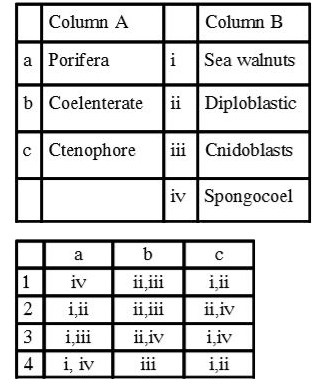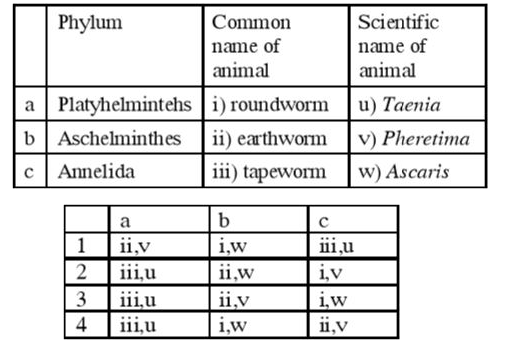Sulphide ion is soft base and its ores are common for metals
(a) Pb (b) Al (c ) Ag (d) Mg
Choose the correct answer the from the options given below:
(a) and (c )only
(a) and (d) only
(a) and (b) only
(c ) and (d) only
To solve the question regarding which metals have ores that commonly contain sulfide ions, we need to analyze the properties of the sulfide ion and its association with different metals.
1. Understanding the Soft Base Concept:
- The sulfide ion (S²⁻) is classified as a soft base according to the Pearson's acid-base theory. Soft bases tend to bond with soft acids, which are typically found in certain metals.
2. Identifying the Metals:
- The metals listed in the options are:
- (a) Pb (Lead)
- (b) Al (Aluminum)
- (c) Ag (Silver)
- (d) Mg (Magnesium)
3. Analyzing Each Metal:
- Lead (Pb): Lead sulfide (PbS) is a common ore known as galena. Therefore, lead is associated with sulfide ores.
- Aluminum (Al): Aluminum does not typically form sulfide ores. Its ores are primarily oxides (like bauxite), not sulfides.
- Silver (Ag): Silver sulfide (Ag₂S) is also a common ore known as argentite. Thus, silver is associated with sulfide ores.
- Magnesium (Mg): Magnesium does not form sulfide ores; its ores are mainly carbonates and oxides.
4. Conclusion:
- The metals that have common ores containing sulfide ions are Lead (Pb) and Silver (Ag).
- Therefore, the correct answer is (a) Pb and (c) Ag.
Final Answer:
The correct answer is (a) Pb and (c) Ag.
- The sulfide ion (S²⁻) is classified as a soft base according to the Pearson's acid-base theory. Soft bases tend to bond with soft acids, which are typically found in certain metals.
- The metals listed in the options are:
- (a) Pb (Lead)
- (b) Al (Aluminum)
- (c) Ag (Silver)
- (d) Mg (Magnesium)
- Lead (Pb): Lead sulfide (PbS) is a common ore known as galena. Therefore, lead is associated with sulfide ores.
- Aluminum (Al): Aluminum does not typically form sulfide ores. Its ores are primarily oxides (like bauxite), not sulfides.
- Silver (Ag): Silver sulfide (Ag₂S) is also a common ore known as argentite. Thus, silver is associated with sulfide ores.
- Magnesium (Mg): Magnesium does not form sulfide ores; its ores are mainly carbonates and oxides.
- The metals that have common ores containing sulfide ions are Lead (Pb) and Silver (Ag).
- Therefore, the correct answer is (a) Pb and (c) Ag.
The correct answer is (a) Pb and (c) Ag.
Topper's Solved these Questions
- BOOK - JEE MAINS PREVIOUS YEARCHAPTER - JEE MAINS 2021EXERCISE - CHEMISTRY (SECTION-B)40videos
JEE MAINS 2021
- BOOK - JEE MAINS PREVIOUS YEARCHAPTER - JEE MAINS 2021EXERCISE - Chemistry Section A40videos
JEE MAINS 2021
- BOOK - JEE MAINS PREVIOUS YEARCHAPTER - JEE MAINS 2021EXERCISE - CHEMISTRY30videos
JEE MAINS 2021
- BOOK - JEE MAINS PREVIOUS YEARCHAPTER - JEE MAINS 2020EXERCISE - CHEMSITRY25videos
JEE MAINS 2020
- BOOK - JEE MAINS PREVIOUS YEARCHAPTER - JEE MAINS 2022EXERCISE - CHEMISTRY (SECTION-B)10videos
JEE MAINS 2022
Similar Questions
Knowledge Check
- Question 1 - Select One
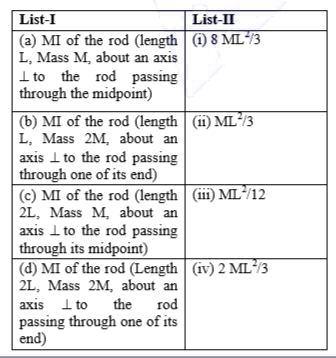
Choose the correct answer from the options given below :A(a)–(ii),(b)–(iii),(c)–(i),(d)–(iv)B(a)–(ii),(b)–(i),(c)–(iii),(d)–(iv)C(a)–(iii),(b)–(iv),(c)–(ii),(d)–(i)D(a)–(iii),(b)–(iv),(c)–(i),(d)–(ii) - Question 2 - Select One
Match the columns and choose the correct answer from the options given below
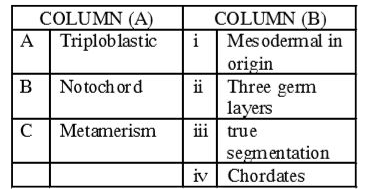 AA -ii, B-iii, C-ivBA-i, B-iii, C-ivCA -ii, B-iv & i, C-iiiDA-iii, B-ii, C-i
AA -ii, B-iii, C-ivBA-i, B-iii, C-ivCA -ii, B-iv & i, C-iiiDA-iii, B-ii, C-i
Match the columns and choose the correct answer from the options given below
 View Solution
View SolutionMatch the columns and choose the correct answer from the options given below
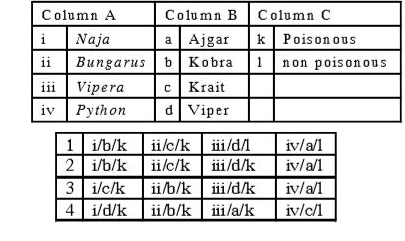 View Solution
View SolutionMatch the following:
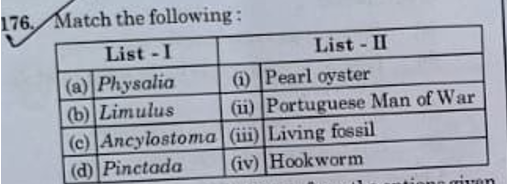 Choose the correct answer from options given belowView Solution
Choose the correct answer from options given belowView SolutionMatch List I with list II.
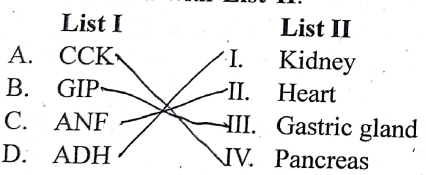
Choose the correct answer from the options given below:View SolutionMatch List I with List II.
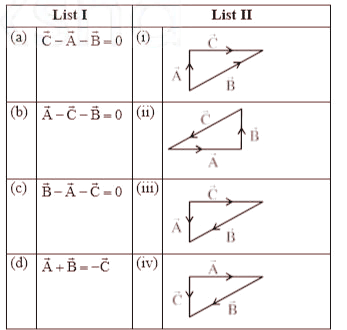
Choose the correct answer from the options given below :View SolutionMatch List I with List II.
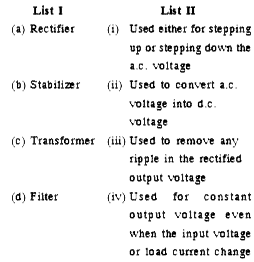
Choose the correct answer from the options given below :View Solution


